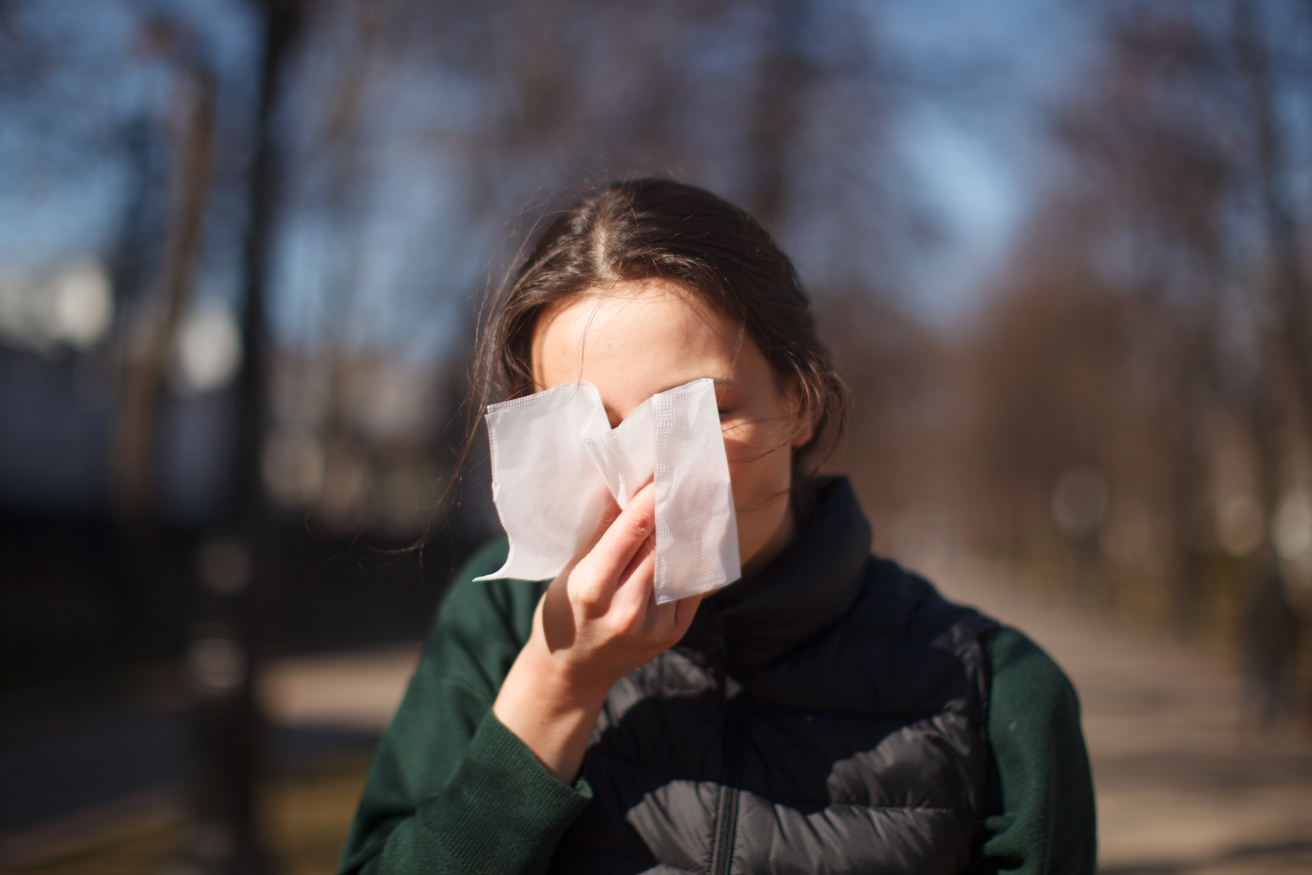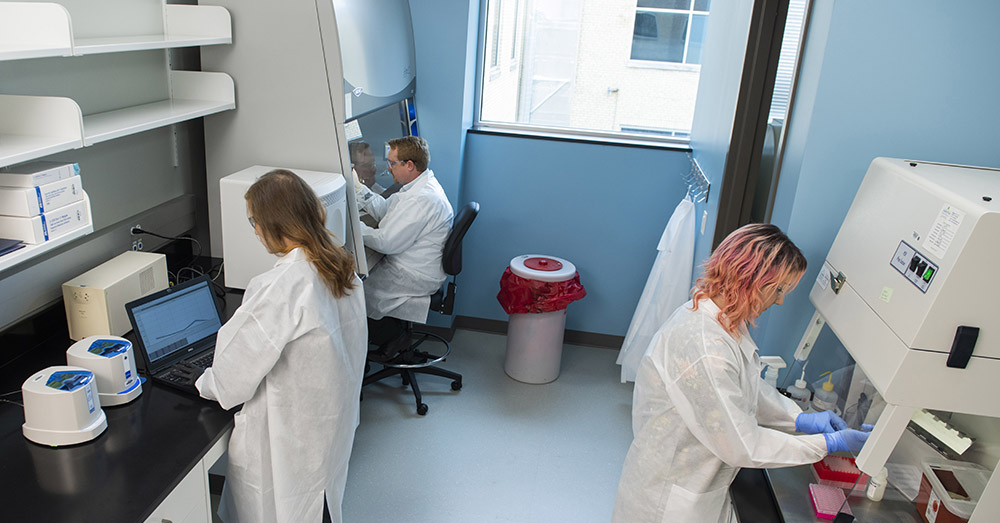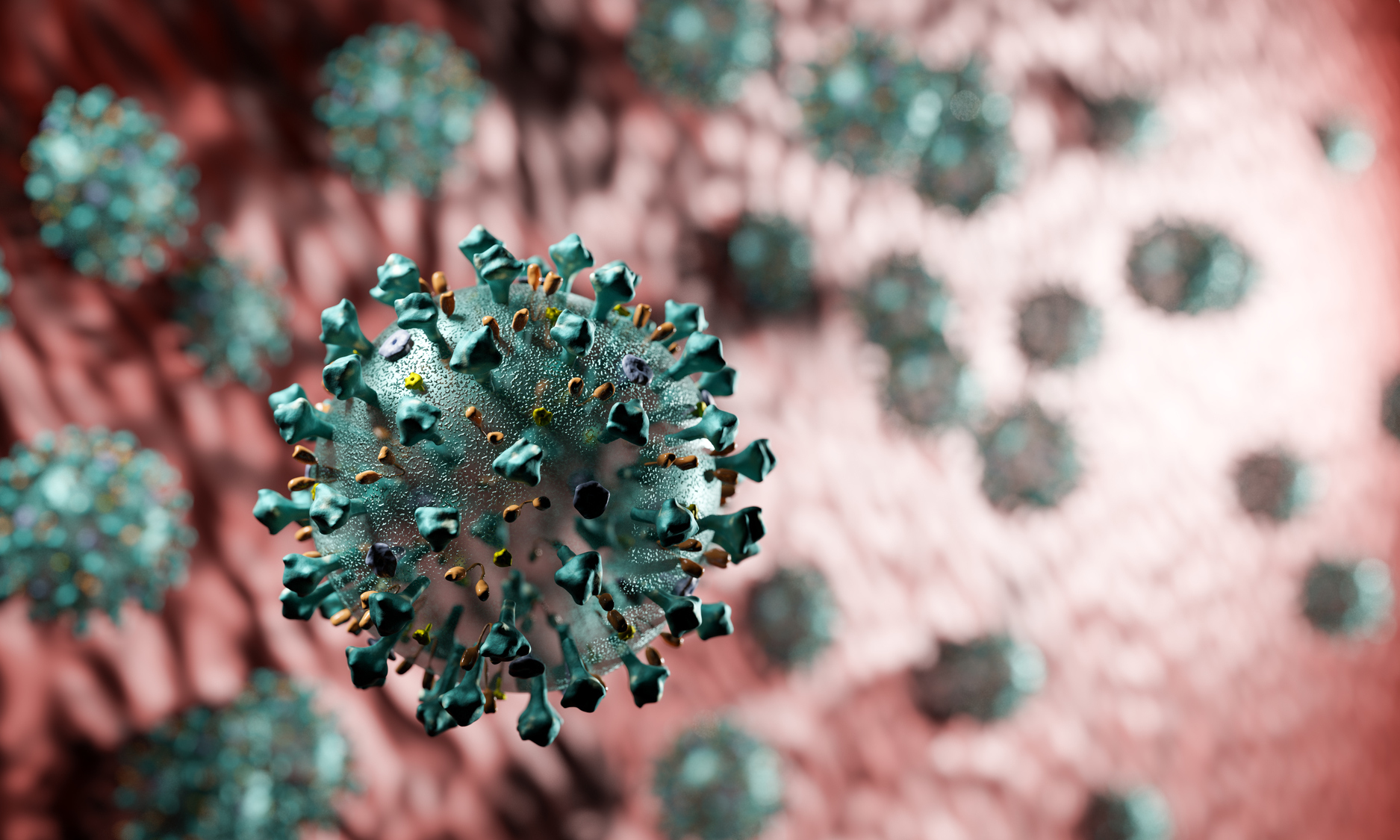Coronavirus is all over the media and the web. When global health crises appear, typically a slew of misinformation follows.
The infectious disease experts at MRIGlobal provide accurate, responsible information based on the questions people ask us about coronavirus and coronavirus transmission.
Recently, we lent our expertise to the online community and hosted a Reddit AMA and a Quora session, where we received hundreds of questions from users all over the country. Read on for our answers to some of the most frequently asked questions about coronavirus.
What is coronavirus?
There are technically seven known types of coronaviruses in humans—only one of which is causing the recent outbreak. Not discovered until December 2019 in Wuhan, China, Coronavirus Disease 2019 (COVID-19) is the most recent virus in its genetic family. From there, coronavirus transmission has helped the virus reach other parts of the globe.
How does this virus compare to other coronaviruses out there?
SARS-2 CoV seems to be able to spread while asymptomatic, which is not seen in SARS-1 or MERS. This contributes to its ability to spread more than SARS-1 and MERS. A total of 8096 SARS cases and 774 deaths across 29 countries were reported for an overall case fatality rate (CFR) of 9.6%. MERS is still not contained and is thus far responsible for 2494 confirmed cases and 858 deaths across 27 countries for a CFR of 34.4%. Despite much higher CFRs for SARS and MERS, COVID-19 has led to more total deaths due to the large number of cases, but the deaths per infection are lower.
MRIGlobal, like others, have observed that the inter-example variance of this new coronavirus is much lower than previously observed species.
However, there could be some sample bias here. The amount and speed of the data being produced is unprecedented and drawing conclusions remains somewhat speculative.
Much like other recently emerging coronaviruses such as SARS and MERS, it appears that the new SARS-COV-2 had its origins in a bat reservoir with passage through some intermediate species that we have not yet observed. This is based on its sequence similarity to the bat coronavirus RaTG13. MRIGlobal has been using novel machine-learning techniques to build models of many of the viruses that have been identified as high concern to human health, including coronaviruses. However, the diversity in bat coronaviruses observed so far is very high, and our sampling of this community is sparse. We think that this emerging pathogen highlights the need to increase data collection, data quality standards, and leveraging of new computational tools.
What are symptoms of COVID-19?
Common symptoms of coronavirus include:
- Fever
- Fatigue
- Coughing
- Aches and pain
- Nasal congestion
- Runny nose
- Sore throat
As you can see, it may at first appear to be a normal cough or cold. To differentiate these symptoms from a common cold, ask yourself: “have I been in contact with the bodily fluid of anyone who has the virus or who has traveled to a destination with an outstanding travel advisory?”
How does coronavirus spread?

Coronavirus spreads via droplets from the nose and mouth. When someone coughs or exhales, those tiny droplets land on surfaces of miscellaneous objects. Then, other people touch those surfaces, and the virus clings onto their hands. Without thinking, many people rub their nose, mouth, and eyes, which allows the virus to enter the body.
What is most misunderstood by the public about pandemics?
The public has such an important role in stopping outbreaks. While first responders, clinicians, scientists, and in this case the brave people that continue to go to work to provide food, essential services (ie internet) and transport vital supplies can’t be thanked enough, all of us are important in the fight against pathogens that cause mankind so much misery. Taking care of yourself, your family, friends and community is so important. The new normal is temporary and life will go on, but little things make a huge difference in stopping the disease.
Is coronavirus transmission deadly?
In rare cases, coronavirus transmission is deadly. But according to the World Health Organization, about 80% of people recover from the disease without special treatment. As of now, only about 2% of people have died from the virus, most of whom are older adults who suffer from underlying conditions such as heart issues, diabetes, and high blood pressure.
Is there a coronavirus vaccine?
Right now there is no vaccine to stop the coronavirus transmission, although many organizations such as MRIGlobal are actively working to develop one.
Without a vaccine, the best way to stop the outbreak is to take measures to prevent the spread, which include:
- Avoiding rubbing your eyes, nose, and mouth
- Washing your hands regularly
- Covering your mouth and nose with the inside of your elbow when you sneeze
- Throwing away tissues immediately after use
- Staying at least six feet away from anyone who is sick
- Seeking medical attention if you have a fever, cough, or difficulty breathing
- Not traveling or going to work if you have symptoms
Is a coronavirus vaccine coming soon? →
How did those people around the world recover from coronavirus, when there is no medicine (still research going on) for it?
We are born with a cure against viruses, including SARS-CoV-2, the virus that causes COVID-19. It is our immune system. As I have mentioned before, there is race between the virus and our immune system each time we are exposed to a pathogen. If our body has never seen the pathogen, our body naturally begins efforts to stop it.
First inflammation (including fever) tries to slow down the virus. Cells in our body start to shut down or slow down to limit new copies of the virus being made in our cells. Next our long-term immunity cells: B cells and T Cells are selected and expanded to kill the virus and cells that have been tricked to make copies of the virus.
The only thing that antivirals do is to slow the virus and thus allow the body to catch up and clear the virus…beat it in the race. Vaccines mimic the virus, often by using just a part of it, and allow our B and T cells to select and expand to create a specific army of immune cells that can attack if the actual target virus attacks. It is a head start against the virus. So, you are the best cure!
What is the current estimated timeline for successful deployment of a vaccine? And what are the chances for this particular virus to mutate and render a vaccine useless?

The US government’s projected timeline for deploying a vaccine is 12-18 months. This is impressive, given that most vaccines and drugs take 10 years and billions of dollars to develop.
Coronaviruses do mutate, but that wouldn’t necessarily render the vaccine ineffective.
What challenges does the coronavirus family have that make vaccine development so difficult? Is it the relative rarity of coronavirus infections in humans, or some aspect of coronaviruses?
It’s not that creating a vaccine for the other coronaviruses is difficult, it’s that there hasn’t been a lot of pressure for it. Pre-COVID19, there were six strains of coronavirus. Four of them cause 1/3 of all colds, and that just isn’t worth pouring time and money into creating a vaccine. One causes SARS and we did work on a vaccine and, from what I understand, made a great deal of headway. But then SARS just died out, and there hasn’t been a case since 2003, so there wasn’t a lot of need for it. However, some of the research that went into that is being repurposed for COVID-19.
Is it true that this is the type of virus that will mutate slightly and return every cold season? Will it become part of the regular flu vaccine?
For a virus to return every season, like you describe, it needs to be able to infect enough people that, even when it’s not “in season”, there is a minimum amount of person-to-person transmission continuing at all times. Maintaining that transmission requires the virus to mutate over time, or else eventually it runs out of susceptible people to infect.
One of the goals of the massive global effort to contain SARS-coronavirus-19 that we’re seeing right now is to prevent this virus from becoming permanently established in humans. Current efforts to develop a vaccine against this virus appear to be focusing on targeting SARS-coronavirus-19 specifically, as well as SARS-coronavirus-1 and MERS.
It’s a little early to determine whether a vaccine for SARS-coronavirus-19 would be formulated as part of a multi-component vaccine, like influenza, or if it would be produced as a single-component vaccine.
Once the vaccine is ready how would it be rolled out to billions of people?
In the US, the vaccine will go through pre-clinical safety and efficacy testing. Then, phase one begins when it is given to a limited number of individuals and we make sure the vaccine is safe and causes no adverse reactions. This process takes about 1-2 months when expedited.) For the next 4-6 months, efficacy will be closely monitored to see if the vaccine is working on the virus.
The vaccine manufacturing scale-up is just as important as these clinical trials in order to meet the demand for the vaccine. To receive the vaccine after clinical trials, people would go to health clinics, pharmacies, or family physicians.
Globally, the US government will then look at international partners who can manufacture and distribute the vaccine.
How much will the vaccine cost?
Vaccines typically run from a few dollars to several hundred dollars per dose. Part of the debate on supplemental funding through the US Congress is making sure a vaccine will be affordable for all.
What is your opinion on the truth of the numbers that have been made public? Does the virus seem more contagious than we’ve been told?
We trust the public numbers of tested individuals. As testing becomes more widespread, we may find more cases. This is a normal aspect of infectious disease and diagnostics.
It’s still too early to tell how contagious it is, but early evidence shows that COVID-19 is somewhere in the middle of respiratory disease transmission rates. Again, hand washing reduces the transmission of diseases like the flu by 85%!
Is it true that children are less susceptible to COVID-19 than adults?
So far, individuals under 18 years old comprise less than 5% of all reported cases. It’s too early to say whether that low number is due to these individuals being less susceptible to infection entirely, or whether they’re less likely have been tested for the virus at all due to presenting with milder symptoms.
What would you most like to tell us that no one is asking about?
It is important for the US (and the world) to be focused on preparedness. Preparing between outbreaks, rather than waiting for new ones to emerge, can be accomplished for a fraction of the cost.
The common theme we’re hearing when visiting with delegates on Capitol Hill is that this is transcending politics: Both parties want fast solutions for the purpose of helping the US and the world.
How big is the virus? What sort of protection does the N95 mask offer?

The virus has a diameter of roughly 0.12 microns. Not to worry, though! The 0.3 micron particle size is used as the standard for rating respirator filters precisely because that particle size penetrates the filter meshwork more effectively than larger or smaller particles do. An N95 will actually filter particles that are smaller or larger than 0.3 microns more effectively than it will 0.3 micron particles. It’s also important to keep in mind that single virus particles are not responsible for the transmission of this disease—the evidence currently suggests that droplets, which typically average around 50-100 microns in diameter, play a larger role in the transmission of the coronavirus. So, a properly fitted N95 would definitely be much more than 95% effective at collecting virus-containing particles.
Since there’s a relatively low fatality risk for those who aren’t elderly/in an at-risk population group, do you believe that people in general are overreacting?
We want people to be prepared, not alarmed. At the same time, we are still learning about the virus, and therefore social distancing is the best practice. Stay tuned to reliable sources. Stay home when you’re sick. Get a thermometer to measure your temperature. Prepare for this disease like you would for any flu season. We suggest finding a good show to binge-watch while you rest.
Symptoms of COVID-19 are mild to moderate in healthy adults. Many may not realize they have anything more than a cold or flu.
What is a realistic timetable for combating the spread of COVID-19?
Only time will tell, and predictions are often wrong. I am not immune to this reality (no pun intended). My estimates are that we (the US) will see the peak of disease in late April early May. Nature is pretty consistent, and coronaviruses that cause human disease (common cold) tend to wane during the late spring and summer. Alternatively, we could see sustained transmission given that this is a virus mankind has never been exposed to before. In either case, we will see more cases in the fall and early winter, second wave.
For the summer, the good news is most other respiratory diseases caused by viruses (influenzas, RSV, other coronaviruses) are seasonal and will decline in this time frame. This will lessen the demands on hospitals and critical care associated with those diseases.
What are the reinfection chances? Does the recent news about there being two strains of coronavirus impact your progress?
Reinfection is unlikely with natural infection. There are two main methods of gaining immunity: One is through vaccines; and the other is your body’s natural response to the disease. Therapeutic treatment increases the likelihood of reinfection because it mitigates the body’s immune response.
We have heard about two strains, but as far as we know, one lab in China recently reported having sufficient evidence of mutation to identify a second strain. Thus far, it seems as though news agencies are running with that sound bite more than there is significant data to support it.
That said, we would need to evaluate therapeutics and vaccines against both strains, if there indeed, are two.
After this outbreak ends, is there anything that we can do to reduce the chances of another pandemic like this occurring?
Demand that investments are made to make sure we are prepared next time (vote for and demand from your politicians funding support for science). We may need to hold those accountable for the failures and rethink how we are preparing. This is my fourth or fifth outbreak, first pandemic, and I feel like it is the movie Groundhog Day. Too much DeJa’Vu. There are new ideas to pursue but the even old approaches continue to be poorly funded.
Learn more about about coronavirus transmission with MRIGlobal
For more than 75 years, MRIGlobal has advanced scientific research across a variety of platforms. With us, it’s not simply about science; it’s about the people who make it all happen.
To learn more about coronavirus transmission, contact us at info@mriglobal.org.
If you’re part of a government agency, business, or academic institution seeking help with a coronavirus project, use our Project Quote Tool to get started today.

